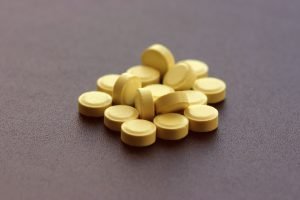Subscribe to the Newsletter
If you are interested in understanding how Traditional Chinese Medicine can improve your life sign up to my newsletter for the latest updates.

Key Learning Points
When was homoeopathy discovered, and who did it?
In the history of homeopathy, one man stands out. He was bright, conscientious, and a polymath. He spoke and translated many languages – a qualified doctor and a licensed pharmacist.
He wrote about living conditions that made people sick 150 years before the world caught up with him. His book, the ‘Organon of Medicine’ is one of the major intellectual achievements of the 19th century.
He was very articulate. And outspoken. He made many enemies. The medical professions hated him! Who was he?

Samuel Hahnemann (1755-1843), a German doctor, introduced homoeopathy 200 years ago.
Classical homoeopathy doesn’t claim to treat diseases. (For a homeopathy definition, click here.)
Instead, it sees symptoms as disturbances in the VITAL FORCE.
These disturbances you experience as symptoms. Certain patterns of disturbances occur in healthy people after giving them a homoeopathic “remedy“.
Finding the remedy for you is not always easy! He intends your remedy to change the pattern of disturbances in your Vital Force. If successful, your pattern of symptoms will begin to improve.
The problem is that this means individualising every patient. No two patients are the same, even if they have the same ’disease’ according to their doctor. So homoeopathy usually takes longer than a consultation with your orthodox doctor.
The history of homeopathy began when he published his ideas about it, starting in 1796. Later he lectured at the university of Leipzig. His students helped him discover and prove remedies. Hahnemann trained a number of doctors who spread the word across the world.
It’s a feature of homoeopathy that its practitioners fall out with one another, as in science and religion.
Many of them fell out with Hahnemann too, though he fell out with just about everyone he could find, sooner or later.
One of the earliest fallings-out was with a Dr Fickel who managed to deceive everyone, for a while.
Hahnemann was a medical student in 1777. While in what is now Romania he saw cinchona (from which we derive quinine) being used for swamp fever. (From this we get the homoeopathic remedy China.)

The history of homoeopathy continues today, suffering occasional ups and downs. Currently in the UK it is on a mild ‘down’, but this is balanced when you realise that Switzerland now allows homoeopathic medicine to be supplied on its NHS.
Hahnemann ended up in Paris, with a beautiful second wife, Melanie, whom he married when she was 35 and he was only 80. (His first wife bore him 11 children and then died, in 1830.)
The history of homeopathy is full of the ‘strange, rare and peculiar’.
The history of homeopathy as it moved from country to country is quite extraordinary. Spread always by fervent advocates, it has attracted huge numbers of followers. In some countries such as India it is one of the most frequently-used forms of medicine.
In the history of homeopathy there are a very large number of diseases, and a very large number of potential homoeopathic remedies, any one of which may be appropriate for any individual with a disease.
So it is unlikely that much research on this acceptable to the ASA (the Briotish Advertising Standards Authority) will be forthcoming for some time. However, the history of homoeopathy as written at the time by reporters and statisticians includes the following.
As a matter of historical record, one of the most outstanding accomplishments in the history of homeopathy was in Leipzig, Germany in the 1800’s. During the scourge of the plague in Leipzig tens of thousands of people died because of this awful disease.
During the Second World War soldiers in the United States and in its army overseas experienced disastrous epidemics of the Flu. The history of homeopathy reports that homeopathic physicians treated this, while other orthodox physicians did not understand what was going on and what to do with this type of illness.
Mastitis is a disease that affects many cattle throughout the world. A survey conducted in the major-milk producing countries shows that each year clinical mastitis affects 15% – 20% of cows.
Antibiotics are not the best way to treat mastitis
Scarlet fever spread through Germany during the 1800’s; one of the most contagious maladies then affecting children. It particularly affected children living in dirty and damp conditions, not uncommon in those days.
We should, however, point out that other systems of medicine at that time were themselves very deficient, even dangerous. How homoeopathy would fare against other modern systems of medicine today is now gradually being tested.

Stay in Touch!
No spam, only notifications about new articles and updates.

Book a Video consultation if you want to know more about your symptoms
OK – now we come to a ‘heavy’ bit. Theory! The history of homeopathy has plenty of people who dipped their oar into it.
Whether you believe in homoeopathy or not, (let alone in the history of homeopathy!) many of the health matters it raised (usually written about by Hahnemann himself, starting from around 1790 – no wonder he made enemies!) are now accepted or beginning to reach into the consciousness of health providers:
Disease process? As you get ill and start to produce more chronic symptoms or symptoms of a more serious nature, the disease moves inwards towards your ‘centre’.
So, whereas the disease process was originally at the level of your first line of defence, your skin or nose – as when you get a ‘cold’ and start sneezing, and your skin is alternately hot then cold, say – next it penetrates to your lungs.
… and each of those medications would of course have a primary and secondary action ..!
Continue taking those asthma medications and all may seem well for years, but those secondary actions will eventually take their toll, perhaps causing insomnia and tiredness, with more susceptibility to other diseases.
Gradually the disease process slips deeper.

The above example is a simplified explanation.
For another ‘take’ on this, read what Margaret Roy, a well-known author and lecturer on homoeopathy, says on the disease process.
Few allopathic doctors think about disease quite this way.
As I said, you don’t have to believe in homoeopathic efficacy to use some of its ideas. The history of homeopathy is full of situations where it forced others to re-consider their positions.

This Introductory Chinese medicine course introduces you to the amazing thinking behind this ancient medicine, now increasingly in demand.

The Scottish College for Chinese medicine provides introductory courses for all, explaining Chinese medicine and its cultural background.

Master Tung’s acupuncture is a hidden treasure, lost to China but recovered in Taiwan from where it spread round the world.

Knee pain has five main causes. It’s certainly worth trying acupuncture before you resort to surgery!
Subscribe to the Newsletter
If you are interested in understanding how Traditional Chinese Medicine can improve your life sign up to my newsletter for the latest updates.
Subscribe to the Newsletter
If you are interested in understanding how Traditional Chinese Medicine can improve your life sign up to my newsletter for the latest updates.